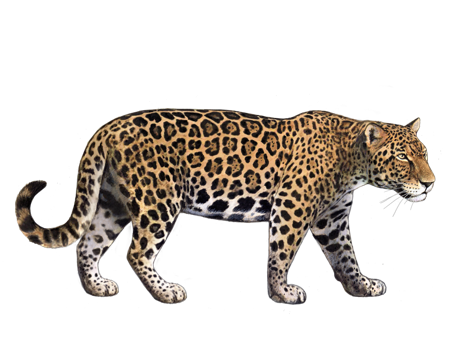
Small Wild Cats
Small Wild Cats include tiny species, such as the Kodkod, and medium-sized wild cats, such as the Ocelot and Caracal.
Interested in discovering if your cat is a Small Wild Cats?
Check out Wisdom Panel's DNA test.
Small Wild Cats Traits
General Appearance
Small Wild Cats vary in size and appearance. Ocelots are the largest species and can weigh up to 35 pounds, whereas Rusted Spotted Cats—the world's smallest wild cat—weigh just three pounds.
Coat and Coloring
These wild cats come in assorted colors, patterns, and coat lengths. Examples include the irregular blotches of color seen on the Marbled Cat's coat or the Canadian Lynx's silvery fur.
Distinctive Physical Traits
Though they all have relatively sturdy builds, each Small Wild Cat species has its own unique set of physical characteristics. For instance, Ocelots have relatively short, stout legs, Margays have enormous eyes, and Canadian Lynx have short, stuffy tails.
Small Wild Cats Temperament
Except for mating season, Small Wild Cats are primarily solitary animals that live and hunt alone.
Small Wild Cats History
The wild cat grouping includes several species—including the Geoffroy's cat, Kodkod, Marbled Cat, Ocelot, Pampas Cat, Rusty-spotted Cat, Tigrina, Caracal, Canada Lynx, Andean Mountain Cat, and African Golden Cat. Though they may not all share the same genus, they all belong to the Felinae subfamily.
The Felinae subfamily originated in Eurasia about 10 million years ago. This grouping of wild cats now primarily inhabits parts of Central and South America. However, some live in other parts of the world. For example, the Marbled Cat resides in Southeast Asia, and the Caracal resides in Africa.
These days, habitat loss, hunters, poachers, and other human influences all pose a risk to many Small Wild Cats populations.
Small Wild Cats Care
Nutrition
Like all felines, Small Wild Cats are carnivores, and their diets consist strictly of meat. Depending on their size and location, they eat everything from small antelopes and rodents to birds and lizards.
Grooming
Small Wild Cats groom themselves to keep clean and remove their scent—which helps keep potential prey from detecting them.
Health
Small Wild Cats are at risk for many of the same diseases as domestic cats, including rabies, distemper, and feline immunodeficiency virus.
Breed Group
Wild cat
The breeds and populations in this group are, as the name would imply, still considered wild and undomesticated. The Wild Cat Group incorporates the widest range of body sizes and natural habitats of all the breed groups.
Resources
https://www.britannica.com/animal/Felinae
https://wildcatconservation.org/wild-cats/asia/marbled-cat/
https://bigcatrescue.org/ocelot-facts/
http://www.felidaefund.org/?q=worlds-smallest-cat
https://bigcatrescue.org/andean-mountain-cat-facts/
https://www.conservationnw.org/our-work/wildlife/canada-lynx/
https://icatcare.org/advice/the-social-structure-of-cat-life/
Reviewed February 23, 2021 by Annette Louviere, DVM







